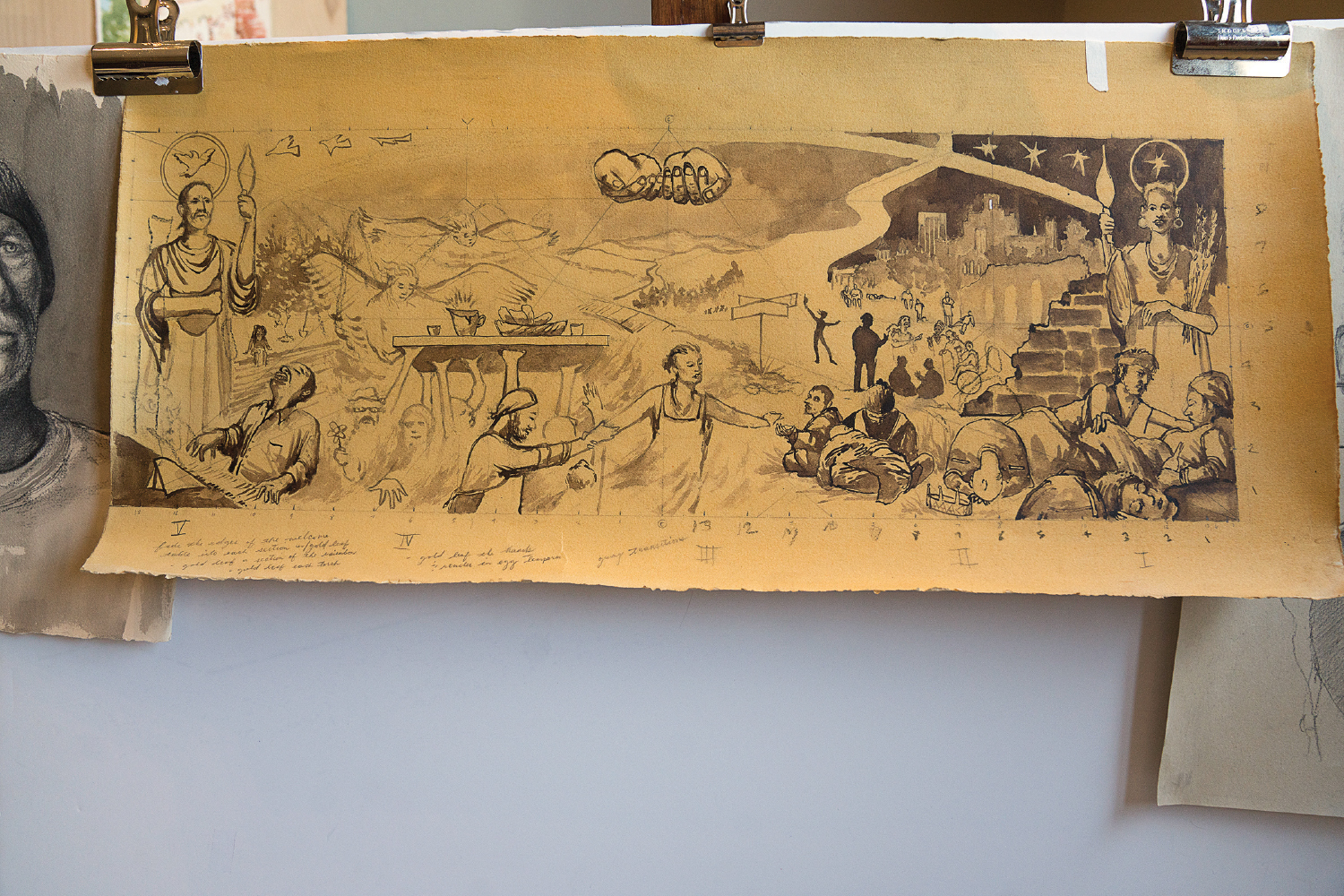
Photo by Audrey Goforth
Haywood Street Congregation, founded in 2009 by Rev. Brian Combs, welcomes everyone, especially those living on the fringes of our society — the homeless population and those experiencing addiction, or in recovery. Brook van der Linde, lead storyteller at the church, describes it as “holy chaos, with a slight lean towards the ‘holy.’”
Notable among the many services Haywood Street provides is its Downtown Welcome Table, where nearly 50 partner restaurants share in providing meals served on china with cloth napkins and with flowers on the tables. Everyone, regardless of their current station in life, is invited to share a meal and conversation with people they would likely otherwise never meet.
The church’s message is being memorialized in a 9.5’-x 27’ fresco in its sanctuary, created by Christopher Holt — who apprenticed under internationally known fresco artist Ben Long — along with team members Anselme Long, Caleb Clark, and John Dempsey. Using the same methods as Michelangelo did when he painted the ceiling of the Sistine Chapel — but, via an unconventional portrayal of the Beatitudes, honoring the meek and poor in spirit rather than the exalted Renaissance/European figures of holiness — the artists intend to express the idea that God is present in all people, and in the relationships we make with one another.
The fresco project was initially to be funded in part by the Buncombe County Tourism Authority, but that move was criticized as being a violation of the U.S. Constitution’s Establishment Clause, which calls for separation of church and state. Eventually, the leaders at Haywood Street decided to move forward, seeking private donations to underwrite this very expensive project. (Classical frescoes are rare enough that the result is projected to be a draw for visitors and visual-art fans, in turn attracting more attention, and thus donations, to Haywood Street’s mission.)

Photo by Audrey Goforth
The wall for the painting was built late last year, and during the approximately six-month period that the traditional sand, lime, and horsehair “canvas” is required to cure before it can be painted on, Holt and his crew are sketching portraits of the people to be featured in the panorama.
“Drawing someone from life, to find each person’s inherent beauty and respect as a person, is a humbling experience,” says Holt. “The greatest impact on me has been the tearing down of my own [figurative] walls of poverty … finding the raw, human thread that [unites] what is meaningful between us.”
“The friends of Haywood Street whose portraits are being drawn for the fresco, in many cases are used to being overlooked … to being invisible,” explains Pam Siekman, the project’s chair. “The pride people are feeling for being included in our fresco outwardly states that “I do indeed belong, I matter, and I’m accepted here for who I am.”
Haywood Street Congregation is located at 287 Haywood St. in downtown Asheville. For updates on the fresco, slated for completion by late summer, see haywoodstreetfresco.org.
I’m thinking of a song which has not yet been written or obviously performed. Possibly something to the tune I Left My Heart in Sand (Lime & Horsehair) Francisco. At this point I’d rewrite most of the Tony Bennett lyrics and see what I can create. I’m glad that I still have some time to do so.